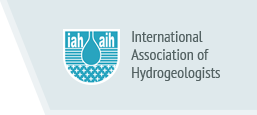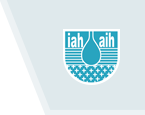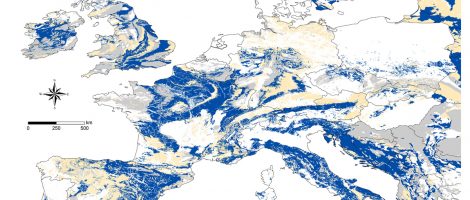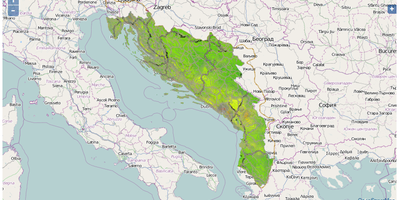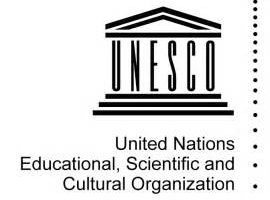Projects
IAH Karst Commission members are involved in a great variety of project around the world. Here are some highlights of a few of the projects with significant involvement of the commission.
Most Important Karst Aquifer’s Springs (MIKAS) International Project
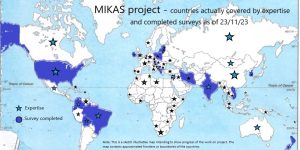 MIKAS, the international project of the Karst Commission, aiming to establish the first complete list of the mostimportant karstic springs at a global level (based on historic, aesthetic and scientific values), to promote them and to create a Code of Practice for them, is approaching its first birthday. Project’s achievements during first nine months since project started has been reported at the KC annual meeting in Tampa, Florida, in March 2023. In meantime the project’s Advisory Board (AB) completed the Guidelines which include selection criteria for the two established groups MIKAS (list of globally important springs) and NIKAS (Nationally important springs), and Spring’s survey form. The project is currently run by 103 collaborators who accepted to voluntarily work on the project. At this stage their expertise will cover 99 countries from all continents. While we have a long list of collaborators, the AB still searching collaborators and participants, especially from Central Asia, Western and Central Africa, Caribbeans, Oceania. If you know some experts from these parts of world, or you have knowledge about springs in these regions from your previous expertise, do not hesitate to contact Zoran Stevanović. (zstev_2000@yahoo.co.uk).
MIKAS, the international project of the Karst Commission, aiming to establish the first complete list of the mostimportant karstic springs at a global level (based on historic, aesthetic and scientific values), to promote them and to create a Code of Practice for them, is approaching its first birthday. Project’s achievements during first nine months since project started has been reported at the KC annual meeting in Tampa, Florida, in March 2023. In meantime the project’s Advisory Board (AB) completed the Guidelines which include selection criteria for the two established groups MIKAS (list of globally important springs) and NIKAS (Nationally important springs), and Spring’s survey form. The project is currently run by 103 collaborators who accepted to voluntarily work on the project. At this stage their expertise will cover 99 countries from all continents. While we have a long list of collaborators, the AB still searching collaborators and participants, especially from Central Asia, Western and Central Africa, Caribbeans, Oceania. If you know some experts from these parts of world, or you have knowledge about springs in these regions from your previous expertise, do not hesitate to contact Zoran Stevanović. (zstev_2000@yahoo.co.uk).
World Karst Aquifer Mapping Project (WOKAM)
The World Karst Aquifer Map (WOKAM) is part of the World-wide Hydrogeological Mapping and Assessment Program (WHYMAP) and intends to facilitate global water-resources management. The project started in 2012, with financial support from UNESCO-IHP and IAH, and the final map was published 2017. The team was led by Nico Goldscheider with an Scientific Advisory Board included KC members Augusto Auler, Michel Bakalowicz, David Drew, Zoran Stevanovic, George Veni and several other colleagues who are not KC members. Around 100 regional experts, many of them KC members, contributed to the success of the project by delivering data and existing maps from many regions of the world.
The mapping procedure and a draft map of Europe was published in a paper by Chen et al. (2017) and a global analysis of karst aquifers is published in a paper by Goldscheider et al. (2020). Both papers are “open access” and became “highly-cited papers” in the Web of Science:
Goldscheider N, Chen Z, Broda S, Auler AS, Bakalowicz M, Drew D, Hartmann J, Jiang G, Moosdorf N, Stevanovic Z, Veni G (2020) Global distribution of carbonate rocks and karst water resources. Hydrogeology Journal, 28(5), 1661-1677. https://doi.org/10.1007/s10040-020-02139-5
Chen Z, Auler AS, Bakalowicz M, Drew D, Griger F, Hartmann J, Jiang G, Moosdorf N, Richts A, Stevanovic Z, Veni G, Goldscheider N (2017) The World Karst Aquifer Mapping project: concept, mapping procedure and map of Europe. Hydrogeology Journal, 25(3): 771-785, https://doi.org/10.1007/s10040-016-1519-3
The map is available as Web GIS and for download in different data formats:
https://www.mags-projekt.de/whymap/EN/Maps_Data/Wokam/wokam_node_en.html
Karst Aquifer Resources availability and quality in the Mediterranean Area (KARMA)
The goal of the KARMA project is to progress in the hydrogeological understanding and sustainable management of karst groundwater resources in the Mediterranean area. Working across scales, from single springs to entire aquifer systems to the entire Mediterranean basin, KARMA aims to provide greater tools for water managers, including improved modeling tools and an early warning system for spring water contamination. KARMA test sites are located in Spain, France, Italy, Lebanon and Tunisia. These sites are also helping to develop a Mediterranean Karst Aquifer Map (MEDKAM), based on the existing WOKAM.
The project started in 2019 and the first phase will end in November 2022. Many KC members contribute to the KARMA project, in different roles: The project is coordinated by Nico Goldscheider; Bartolomé Andreo, Hervé Jourde, Marco Petitta and Joanna Doummar contribute as PI; Zoran Stevanovic, Nataša Ravbar and Michel Bakalowicz act as external project advisors; and several other KC members are involved as Co-PI or regular project member.
The project has received funding from the European Union’s PRIMA research and innovation program and the national funding agencies. Further information can be found on this website: http://www.karma-project.org/
UNESCO project on Dinaric Karst Aquifer System (DIKTAS)
Karst Commission members are participating as experts on the Science Advisory Panel for the project “Protection and Sustainable Use of the Dinaric Karst Transboundary Aquifer System” (DIKTAS). This project was GEF funded and implemented by UNDP and UNESCO during the period 2011-2014. The project partners were the countries of Croatia, Bosnia & Herzegovina, Montenegro and Albania. The project’s mandate was to improve understanding of shared water resources and to facilitate their equitable and sustainable utilization, including the protection of dependent ecosystems. This was the first ever transboundary aquifer project of such a magnitude conducted in karst environment. The Project manager was our member Neno Kukuric, while Zoran Stevanović and Neven Kresic contributed or led some project activities.
After successful project completion, the second phase of the project: Improving groundwater governance and sustainability of related ecosystems is in preparation.
The web site will be updated when approved stage II of the DIKTAS project will start.
IGCP Project 598 – Environmental Change and Sustainability in Karst Systems
The aim of this project is to increase and improve global understanding of karst and water resources. Through this, the project hopes to educate people on the effects on ecological health and human issues related to water supply, agriculture, and urban development on karst (UNESCO/IUGS IGCP 598).
The KC Member Zhang Cheng is the project leader; KC members C. Groves, B. Andreo and Yuan Daoxian are among the co-leaders.
Project progress can be followed on the: http://www.karst.edu.cn
Karst Observatory–SNO KARST
A KARST observatory network (SNO KARST) has been initiated by researchers at the French Institut National des Sciences de l’Univers (INSU/CNRS). SNO KARST focused on strengthening knowledge-sharing and to promote cross-disciplinary research on karst systems at the national scale. Using a network of 9 observatories, the network aims to provide sustained long-term observations of key variables in karst waters and free, open-source analytical software for karst water researchers, covering a wide range of approaches. Visit the project site here: https://sokarst.org
RObust Conceptualisation of KArst Transport– ROCKAT
This project aims to develop a conceptualized bucket model of discharge and transport in karst systems through separating hydrologic processes based on different storage compartments (i.e. epikarst, matrix and conduit systems). Conceptual bucket models are widely used to predict spring discharge in karstic watersheds, while solute transport modelling remains challenging due to the underlying karst complexity.
The main scientific objectives of this project are:
(a) to develop lumped bucket models with different levels of complexity to reproduce the dominant solute transport processes in the different compartments of karst systems. The solute transport routines will be combined with existing discharge models, i.e. LuKARS and KarstMode, and validate for multiple karst systems;
(b) to perform the calibration and validation of the hydrological karst models based on the discrete wavelet decomposition (multi-temporal scale calibration), of both discharge and hydrogeochemical signals (multi-objective calibration);
(c) using the experimental results of tailored event-based sampling campaigns to decompose time series of electrical conductivity with a high temporal resolution into the major ion concentrations to determine relevant factors affecting transport processes in the different parts of the karstic systems;
(d) to create an applicable modelling toolbox as a graphical user interface (GUI) for all the developed tools.
The project is managed by Gabriele Chiogna and Andreas Hartmann at School of Engineering and Design, Technical University of Munich.
https://www.cee.ed.tum.de/en/hydrologie/research/current-projects/rockat
